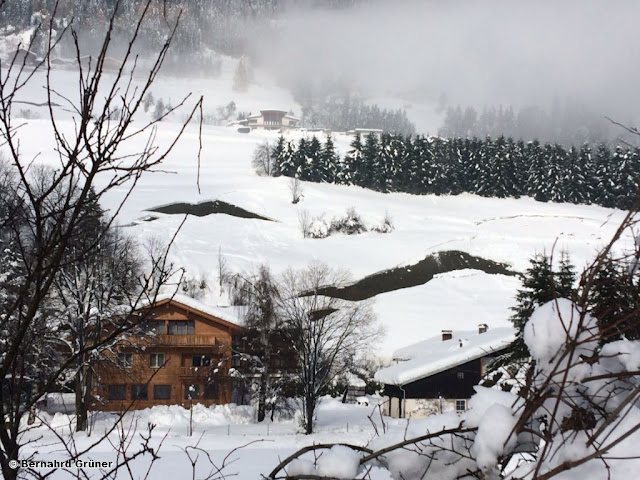What the ZAMG Weather Service has dubbed an “extreme weather situation” is leading to an extraordinary avalanche scenario, with high avalanche danger in general in the southern regions.
 |
| Danger map of the Avalanche Bulletin for 17.11.2019 |
The combination of heavy snowfall including storm-strength winds in the heights, and rising temperatures complete with increasing rainfall at least up to intermediate altitudes, has weakened the snowpack to an extraordinary degree in the interim.
Heightened activity of naturally triggered avalanches
Naturally triggered avalanche releases are the result. At this juncture the first large-sized releases have been registered in northern East Tirol in Defereggental and Virgental (near the prudently made closures) and in Stubaital. Our colleagues in South Tirol and Trentino have also reported the first wet-snow avalanches, some of which were very large.
 |
| Avalanche release in Zillergrund (Photo: 17.11.2019) |
 |
| This huge slab avalanche was artificially triggered by explosives on Rettenbachferner glacier yesterday, 16 November. |
During the afternoon, we anticipate ongoing persistent intensive precipitation and, thus, more naturally triggered avalanche releases, some of which will be very large, particularly in higher altitude starting zones. In addition, there is also high danger of glide-snow avalanches on steep grass-covered slopes, particularly in the regions which are rain-impacted. Due to the water seepage into the snowpack, the friction of the snow with the ground is reduced. This increases the likelihood of release.
 |
| An important theme during the last few days: glide-snow avalanches on steep grassy slopes. Heightened danger will persist over the next few days. Sillian (Photo: 16.11.2019) |
 |
| The steep curve of precipitation reflect very intense precipitation. Southern East Tirol. |
What’s next?
The culmination of naturally triggered avalanche activity will be reached and passed today, 17 November. Due to the persistent strong winds at high altitudes (well above transport velocity) and the additional burden atop the snowpack which this will cause, together with heightened danger of glide-snow avalanches, the danger level will still (just) be “high” in the major areas of precipitation tomorrow (18 November).
 |
| Ongoing strong winds in the mountains |
Glide-snow avalanches are the main danger. Slab avalanches from high-altitude starting zones are still expected only in heavily wind-impacted zones.
Forecast for Tuesday, 19 November, is still up in the air due to further, uncertain amounts of precipitation.
In the northern regions of the land, better conditions, due to much less precipitation.
